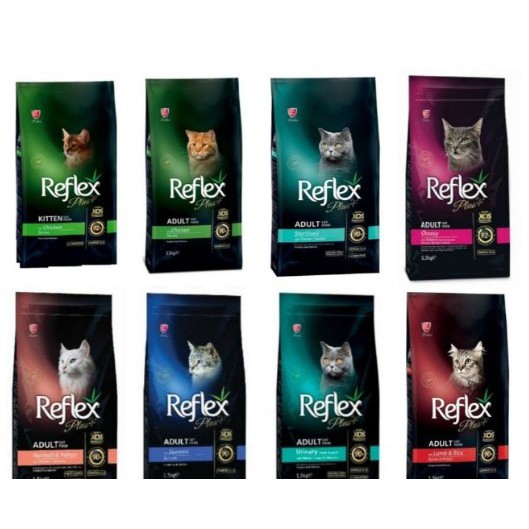Communication Styles in Different Cat Breeds: Understanding Your Feline Friend’s Language
Cats, those enigmatic creatures that grace our homes with their presence, possess a unique and intricate form of communication. While they may not utter words like we do, they convey their thoughts, emotions, and intentions through a symphony of vocalizations, body language, and subtle behaviors. Understanding these communication styles can deepen our bond with our feline companions and enhance our ability to meet their needs effectively.
Decoding the Vocal Symphony of Cats
Cats possess a diverse vocal repertoire, each distinct sound carrying its own meaning. From the soft purr that signals contentment to the piercing yowl that expresses distress, deciphering their vocalizations is key to understanding their emotional state.
- Purring: The quintessential sound of feline contentment, purring is often associated with happiness, relaxation, or a sense of security. However, it’s important to note that cats may also purr when they are in pain or discomfort, so it’s crucial to observe their body language for context.
- Meowing: A common form of communication, meowing serves various purposes. Kittens meow to get their mother’s attention, while adult cats meow to greet us, ask for food, or express a desire to go outside. The tone and pitch of the meow can convey different emotions, from a friendly hello to an urgent plea for assistance.
- Hissing: A defensive vocalization, hissing is a clear warning that the cat feels threatened or agitated. It’s best to back off and give them space to calm down.
- Growling: Similar to hissing, growling is a more intense warning that the cat is ready to attack. It’s advisable to respect their boundaries and remove yourself from the situation to avoid getting scratched or bitten.
- Chirping: Often heard in playful or excited cats, chirping is a high-pitched sound that resembles a bird’s song. It’s a sign that your cat is feeling happy and energetic.
Body Language: A Visual Expression of Feline Emotions
Cats communicate volumes through their body language, conveying their mood, intentions, and needs. By observing their posture, tail position, and facial expressions, we can gain valuable insights into their inner world.
- Ears: Perked-up ears indicate alertness and attention, while flattened ears signal fear, submission, or aggression.
- Tail: A held-high tail with a slight curve at the tip conveys confidence and happiness. A low-hanging tail may indicate fear or insecurity, while a swishing tail expresses agitation or annoyance.
- Posture: A relaxed posture with the body stretched out and the belly exposed shows that the cat feels safe and comfortable. A hunched posture with the back arched and the fur standing on end is a sign of fear, aggression, or illness.
- Eyes: Direct eye contact can be interpreted as a challenge or threat, while slow blinking is a sign of trust and affection. Dilated pupils indicate excitement or fear, while constricted pupils signal relaxation or contentment.
Other Subtle Communication Cues
Beyond vocalizations and body language, cats employ other subtle behaviors to communicate their feelings and intentions.
- Rubbing: Cats rub against objects, people, and other animals as a form of marking their territory and expressing affection.
- Kneading: Also known as “making biscuits,” kneading is a rhythmic motion that cats often perform on soft surfaces. It’s thought to be a comforting behavior that mimics nursing on their mother’s teat.
- Head-butting: Cats head-butt people and objects as a sign of affection, greeting, or dominance.
- Licking: Cats lick themselves and others to groom, show affection, or relieve stress.
Understanding Breed-Specific Communication Styles
While all cats share common communication patterns, certain breeds may exhibit unique nuances in their expression. Understanding these breed-specific traits can further enhance our ability to connect with our feline companions.
- Siamese: Known for their talkative nature, Siamese cats are vocal and expressive. They often engage in conversations with their owners, meowing in various tones to convey their needs and desires.
- Persian: Persians are typically quiet and reserved cats. They communicate mainly through body language and subtle facial expressions. Their soft purrs and gentle meows are signs of contentment and affection.
- Bengal: Bengals are active and playful cats that enjoy vocalizing. They may chirp, trill, and meow to express excitement, curiosity, or a desire to play.
- Ragdoll: Ragdolls are known for their gentle and docile nature. They rarely meow and instead communicate through soft chirps and purrs. Their body language is relaxed and inviting, with a tendency to go limp when picked up.
- Maine Coon: Maine Coons are large and friendly cats that have a distinctive vocalization known as the “chirp.” They are generally talkative and enjoy engaging in conversations with their owners.
Fostering Effective Communication with Your Cat
By attuning ourselves to our cat’s unique communication style, we can foster a deeper bond and better understand their needs. Here are some tips to enhance communication with your feline friend:
- Pay Attention to Vocalizations: Listen attentively to your cat’s vocalizations, considering the context and tone to discern their meaning.
- Observe Body Language: Be observant of your cat’s body language, paying attention to ear position, tail movement, and facial expressions.
- Respect Their Boundaries: Respect your cat’s boundaries and give them space when they need it. Avoid forcing interactions when they are feeling agitated or overwhelmed.
- Use Positive Reinforcement: Reward your cat with treats, praise, or petting when they display desired behaviors. This positive reinforcement encourages them to continue communicating with you.
- Create a Safe and Comfortable Environment: Ensure your cat’s environment is safe, comfortable, and free from stressors. This promotes relaxation and reduces the likelihood of aggressive or fearful behaviors.
By understanding the nuances of cat communication and adapting our behavior accordingly, we can forge a stronger bond with our feline companions and create a harmonious household where both species thrive.







